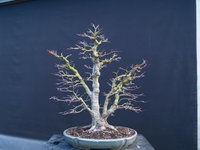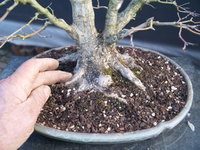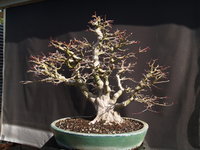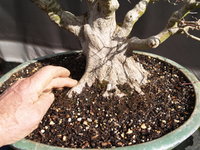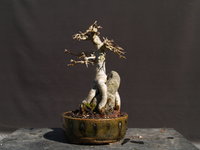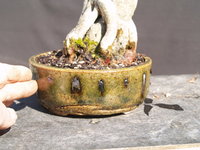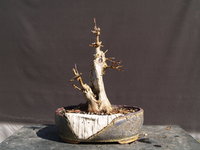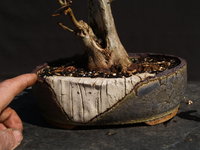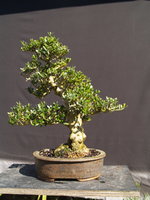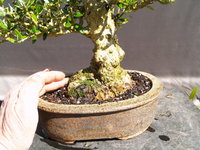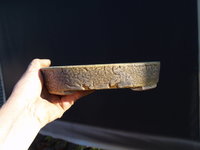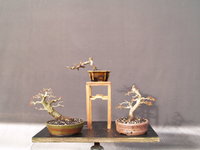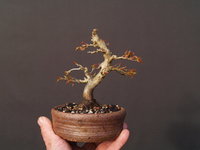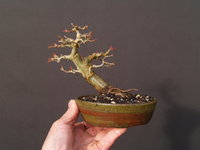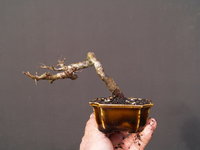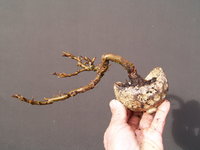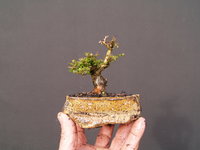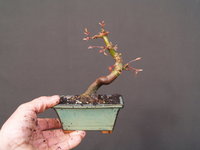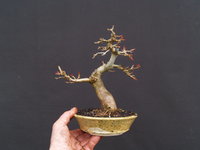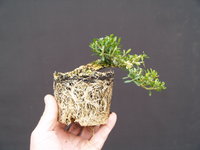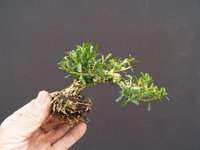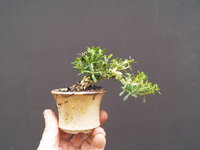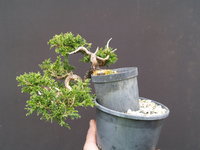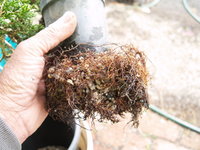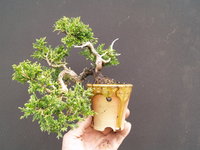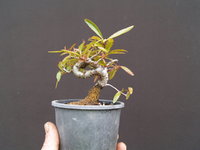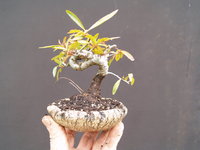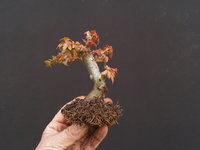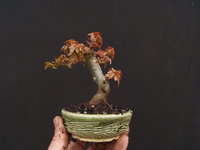So it's time to repot and I take the tree out of the pot and comb out roots and then cut them back. How much do you typically cut the roots back? Stated differently, if I am still growing out the tree, how much room do I leave after the repot for roots to run?
As usual the answer is 'it depends'
Different species tolerate more or less root pruning. Trident maples, banksia, Chinese elm can all be root pruned very hard, up to 90% root removal for healthy young trees. Pines and oaks don't grow new roots quite so well so typically only take 50-70% except for seedlings.
Younger trees seem to have greater tolerance for root pruning. Most seedlings can have almost all roots removed and will quickly grow replacements. Even pine seedlings can cope with 90% root reduction. Older trees should have less removed.
Stage of development can also influence how much to root prune. Chopping roots harder allows lots of new roots so the trees will grow more and faster following hard root pruning. Lighter root prune gives less new soil and less room for roots to grow so growth will be slightly restricted.
Take pot/tree size into account too. Many of my older trees now have thick base (also down under the soil in the pot) so there's actually relatively few roots in the pots and little space for new roots so I root prune less on those trees.
For a specific example, I'll be repotting a seiju elm into a bonsai pot next spring. The plastic pot it's currently in is 15X12X3 and I'll be moving the tree into a pot 13X11X2. So not only do I need to reduce the roots to get it to fit in the new pot, I need to reduce it further so the roots have space to run. How much of a root system should remain after the repot?
Chinese elm tolerate root pruning well so don't be afraid to cut hard there.
typical Chinese elm that has not been root pruned well previously will have just a few long, thick roots. Initial root prune can take off 90% of roots. Many new roots will grow from the cut ends giving better root ramification and increasing the number of fine feeder roots. Ramification is far better when starting close to the trunk so I make initial root chops closer than 1 trunk thickness out on all major roots.
How much is left depends what you fin under the soil and the size of the trunk but it is not unusual for me to reduce Seiju roots by 90% at initial repots. I doubt you'll go that hard but it may alleviate some of your concerns.
All Chinese elm vars, including Seiju, grow well from root cuttings so keep and good sections of root and start some new Seiju.
